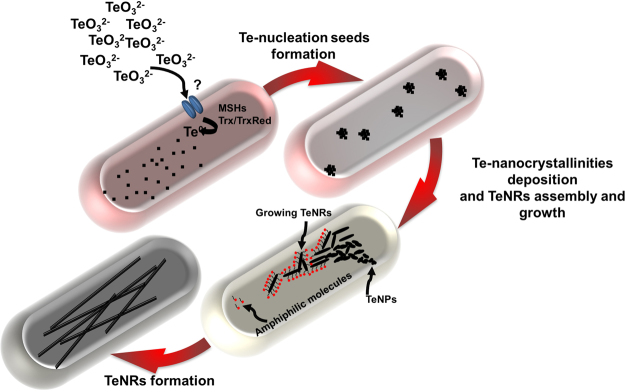Figure 7.
Intracellular assembly and growth of biogenic TeNRs. Once internalized by BCP1 cells, TeO32− bioconversion leads to the formation of Te0 atoms, whose concentration increases as the BCP1 exposure time to the oxyanions increases. Over the incubation time, Te0 atoms reach such a critical intracellular concentration that determines their aggregation, counteracting their thermodynamic instability within the cellular environment. This event results in the formation of Te nucleation seeds, whose intracellular concentration increases the more is the extent of TeO32− bioconversion. Te-seeds then collapse each other forming TeNPs featured by a-Te, which is less thermodynamic stable compared to t-Te. In this respect, biogenic TeNPs tend to dissolve providing Te0 atoms that deposit as t-Te nanocrystallinities, which then grow intracellularly along one axis forming TeNRs, whose growth process might be assisted by the amphiphilic molecules co-produced by the BCP1 strain.

